Home Gyms, such as multigyms, cable gyms and functional trainers have more resistance options available today than ever before as product designers incorporate new materials that aim to improve comfort, performance, durability, and reduce costs.
Shoppers regularly evaluate a home gym’s design and quality, to determine the types of exercises that can be completed and its performance and durability. However, understanding the advantages and disadvantages of the resistance system on a gym can help potential buyers better evaluate the home gym’s suitability for their needs.
All resistance options can be categorized into 3 groups based on the type of resistance they output: constant, variable, or dual (both).
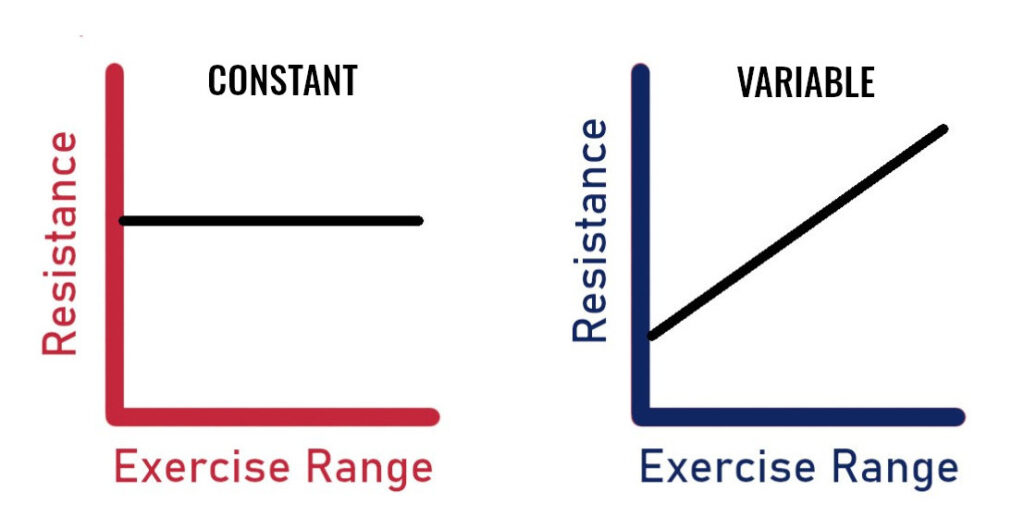
Constant Resistance incorporates all designs where the amount of resistance directed against the target muscle or muscle group does not vary through the range of athletic movement.
Variable Resistance incorporates all designs where the amount of resistance directed against the target muscle or muscle group does vary through the range of athletic movement.
Dual Resistance incorporates all designs where the amount of resistance directed against the target muscle or muscle group can either vary or not vary through the range of athletic movement.
The benefits of traditional strength training with constant resistance is well documented but if you wish to learn more about the advantages variable resistance training offers we recommend this article.
Let’s take a closer look at some of the most common resistance options in each of these categories and some of their advantages and disadvantages.
Constant Resistance Systems
Designs that use constant resistance have the advantage of offering a consistent value of resistance for users throughout the exercise, just like with traditional free weights. There are some variables on home gyms such as the amount of friction on parts such as pulleys and guide rods but generally once you start the exercise action the value is consistent throughout the entire exercise. Furthermore, the amount of resistance does not decrease in value over time due to wear and tear. A 20 lb. plate, block or bucket of sand will still have the value of 20 lb. in the future unlike products that rely on twisting stretching or flexing to produce resistance whose values degrade over time.
Weight Plates
Made from a variety of different materials, weight plates are loaded onto posts and lifted against gravity to create the desired resistance.
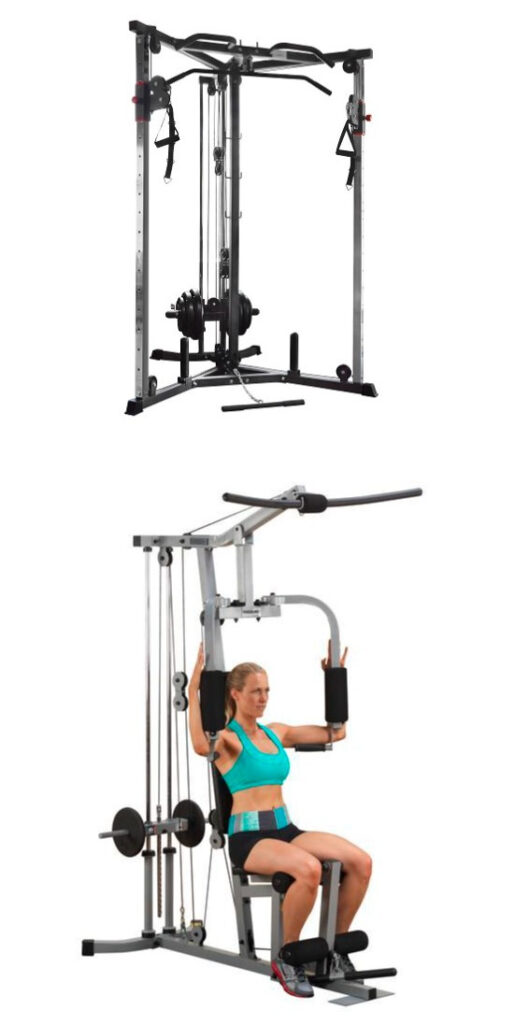
Advantages:
Lower Price. Home gyms that require weight plates rarely include the plates in the cost of the gym so the starting price for these gyms is less than a comparable gym with a resistance option included. If you do not already own weight plates, then you will need to include the cost in the final amount. If you do own weight plates then the more you can use them on different pieces of equipment such as dumbbells, barbells, and other machines then the more money you save.
Psychological. Some people get enjoyment out of the traditional process of loading and unloading plates and “pumping iron”.
Higher Maximum Weight. If the plate holder posts are long enough on the gym you can keep adding plates until you max out the capabilities of the other gym components such as the cables, pulleys etc.
Disadvantages:
Ease of Use. Having to constantly lift off and change plates during a workout can be both time consuming and annoying for some users. Also, to ensure smooth operation and reduce wear on the components you always need to ensure the weight on both sides of the plate loading assembly is equal, so it is balanced.
Safety. Anyone who has dropped a plate on a foot is all too aware of the risks associated with this option. Also, homes with children need to be especially careful of the potential dangers loose plates hanging around offer.
Space Efficiency. Depending on the design of the gym, plate loaded gyms often have a larger footprint. Furthermore, the user must be able to access the weight plate carriage easily from both sides to install and remove the plates so these gyms often can’t be put up against a wall or tucked right into a corner.
Selectorized Weight Stack
Made from a variety of different materials, selectorized weight stacks always have a long rod that drops down through the center of the stack. A selector pin is then used to engage the number of plates in the stack that need to be lifted against gravity to create the resistance.
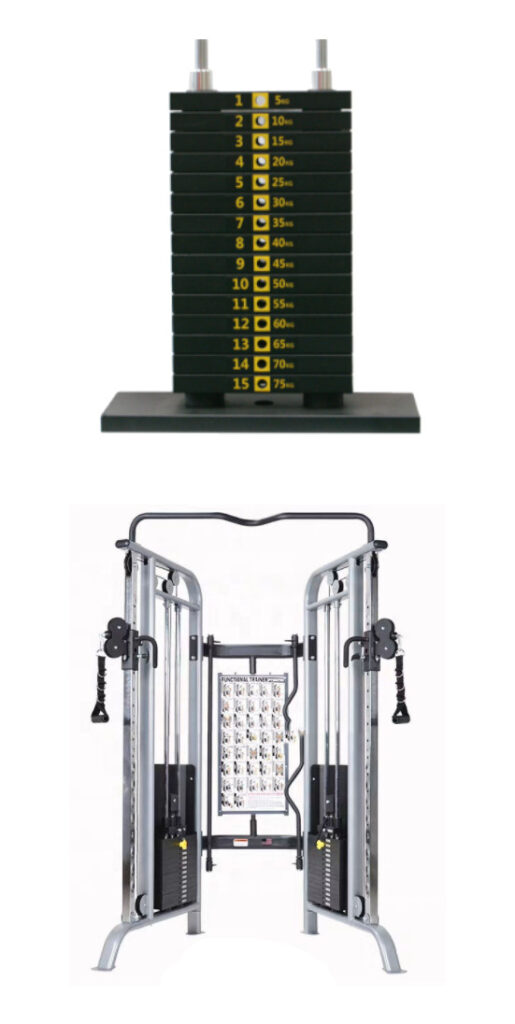
Advantages:
Ease of Use. Being able to quickly remove and insert the selector pin into the desired position on a pre-installed weight stack makes this the simplest to use of all designs.
Safety. The weight stack plates cannot be removed so it is much safer for homes with children. Furthermore, the selector pin can be removed and hidden when not in use to avoid anyone, such as eager teenagers, trying to lift unsupervised.
Disadvantages:
Cost. You need to purchase the weight stack with the gym so the starting price will be higher. The more weight you purchase the more it will cost.
Maximum Weight. Depending on the cable ratio of the gym, heavy lifters may max out the weight stack on certain exercisers. Some home gyms offer a weight stack that also includes plate posts so extra weight plates can be added to boost the maximum resistance.
Most Common Materials Used on Constant Resistance Home Gyms:
Cast Steel. This alloy is the hardest and strongest resistance option available making it the most durable and resistant to breakage. Most premium selectorized weight stacks offer this option to avoid the chances of a plate cracking if a user loses their grip on a bar or a cable breaks and a lot of weight comes banging down. However, the process of casting steel plates is more labor intensive and costly than casting iron, so you pay a premium for the upgrade.
Cast Iron. Easier and more cost effective to produce than casting steel, cast iron offers excellent corrosion protection and some cost savings but is more prone to cracking if treated roughly. A popular choice for non-heavy lifters.
Composite. There are a range of composite materials including mixtures of cheaper alloys, cements, and sand-based products to name a few. Many of these are not as dense as cast iron or steel so the comparative plates can be larger but often offer there are cost or emissions benefits. Like cast iron, composite plates are usually less resistant to cracking if treated roughly but are another popular choice for non-heavy lifters.

Variable Resistance Systems
There are tremendous benefits to Variable Resistance Training as highlighted in this article, so it is no wonder that certain users look for gyms that offer this type of system. Furthermore, when incorporated into a home gym, the ability to perform more intensive sports actions and cardio training comfortably and safely are big advantages over constant resistance systems.
However, gyms that exclusively offer variable resistance training do have some shortcomings. Because they rely on stretching, twisting or flexing a lightweight material the resistance always begins at zero and then increases throughout the exercise range. The inability for most designs to preload any constant resistance results in the first part of an exercise action being too light for many users. These types of material are also prone to wear, loss of strength and breakage over time.
However, the main reason home gyms use these products is they allow a home gym to be sold at a lower price. The lower production costs and lower freight and shipping costs due to the lighter weight of the final product can be significant.
Resistance Bands/Tubes
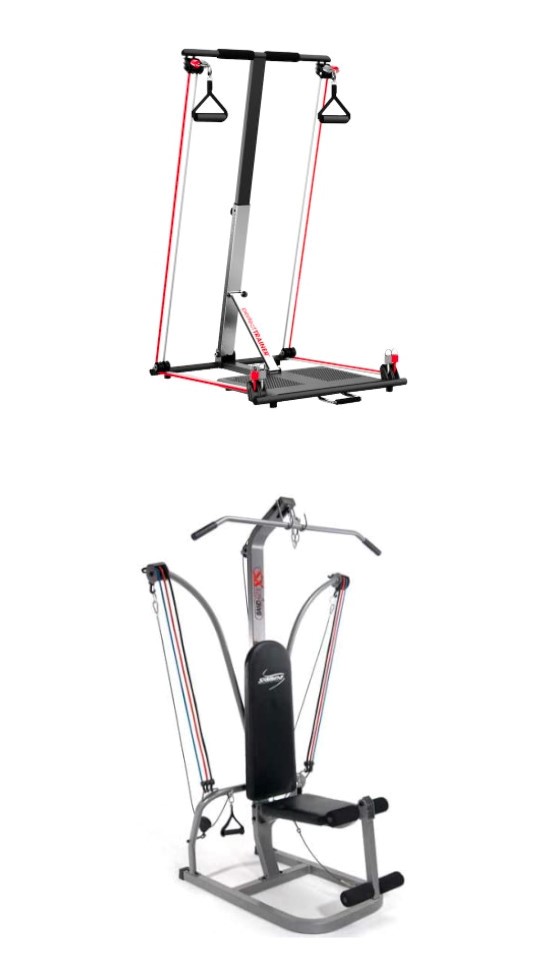
Resistance Bands and Tubes are generally made from a latex or a rubber-based material. They can be manufactured in different strengths that gradually increase their resistance through tension as they are stretched.
Advantages:
Lower Price. Resistance Bands and Tubes are generally made from a latex or rubber-based material which is not only cheap to produce they are light weight and cost significantly less to ship.
Disadvantages:
Inaccurate. The actual value of the resistance can be inconsistent to the listed value depending on the quality of manufacturing and become worse over time as they wear.
Durability. All bands/tubes that create their resistant through stretching will wear and eventually break and require replacement. Direct sunlight and other causes can also result in reduced durability.
Low Starting Resistance. Usually these items rest with no tension (no pre-loading or pre-stretching) so the desired resistance can take a while to achieve making it better suited for very light lifters or rehabilitation workouts.
Power Rods
Used primarily on cable gyms, power rods create resistance through flexion. They can be manufactured with different maximum strengths and the amount of resistance increases the further the rod is bent.
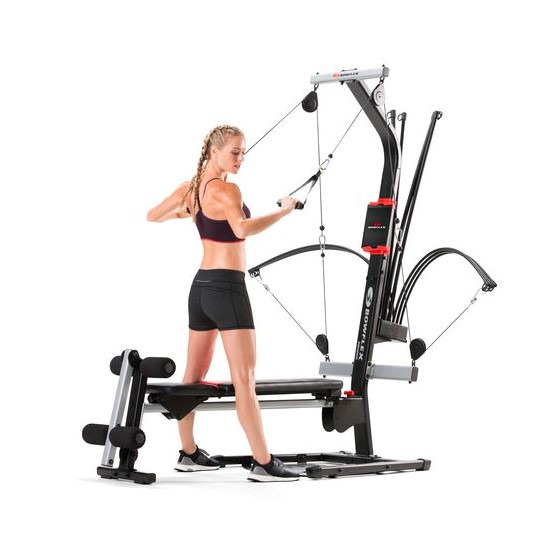
Advantages:
Lower Shipping Costs. As Power Rods are generally made from a light composite material, they are significantly cheaper to ship than cast iron or steel plates making them a popular choice for units sold directly to customers and shipped using courier services.
Higher Maximum Resistance. Compared to resistance bands & tubes, power rods are much easier to achieve higher resistance levels.
Disadvantages:
Inaccurate: The actual value of the resistance can be inconsistent to the listed value depending on the quality of manufacturing and become worse over time as they wear.
Low Starting Resistance: Power Rods rest with no tension so the desired resistance can take a while to achieve, especially for exercises that require heavier resistance.
Ease of Use: Constantly detaching and reattaching rods to make different values can be a little time consuming and annoying to some users.
Durability. As power rods create their resistant through flexing, they will wear, bend over time, and lose some of their resistance. Stronger lifters can break the heavier rods over time.
Dual Resistance Systems
Free weight exercises have been successfully incorporating variable resistance training with traditional workouts by adding chains and bands to barbells and other equipment for many years. By combining the two training techniques, users can overcome the inherent issues most exclusive variable resistance training equipment has such as zero starting resistance and a too low of a maximum resistance.
Furthermore, constant, and variable resistance systems both suffer from their own inherent issues when a user tries to perform high-speed ballistic movements or sports specific actions. With constant resistance systems, the momentum of the weight makes these actions unsafe and feel horrible and can easily damage components. With exclusive variable resistance systems, the lack of momentum often results in a bouncing effect at higher resistance levels as the bands or tubes jerk back in their desire to return to their rest position.
Home gym designers have been busy searching for ways to offer similar benefits and to simulate the same smooth feeling the combination of free weights and resistance tubes/bands achieve. And now, several innovative products are available with systems that are successful in achieving that goal.
Electromagnetic Systems
Advanced electromagnetic systems have been used in cardio equipment for many years and now are being used in some strength equipment. Resistance is changed by adjusting the amount of electrical flow to the magnets, thus strengthening, or weakening the magnetic field.
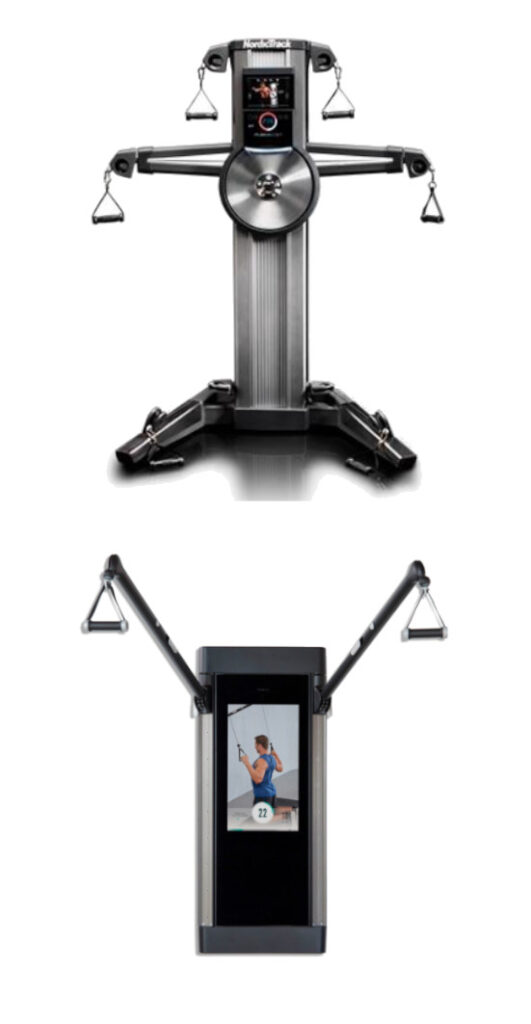
Advantages:
Automatic Resistance Changes. Users can complete pre-programmed workouts, just like on cardio equipment, that automatically change resistance levels as you progress. Some units also offer customized training programs and built-in workout calendars.
Spotter Assist. If the last couple of reps in your set become challenging, the software can sense your struggles and reduce the resistance to help you finish the set.
Disadvantages:
Feel. Electromagnetic resistance feels its smoothest when the momentum of the flywheel is relatively consistent such as on bikes and elliptical machines. When there is high acceleration movements, such as a simulated golf swing, there is a slight delay before the resistance kicks resulting in a jerking feeling.
Power. These gyms require electricity, so a close-by power point is required or plan for an extension cord and cabling across the room. And of course, do not plan for a candlelight workout when a storm causes your power to go out.
Software. Programming glitches or errors can cause frustrations and compromise the use of the system altogether so check user reviews regarding the stability of the product’s programming.
Price. As with any new technology, you pay a premium until the volumes reach a level that causes the price to come down.
Servicing. If a part in the electromagnetic system fails, then the unit will usually be left with no resistance and be useless until repaired. Furthermore, repairs are not as straightforward as other systems so check the product warranty details and don’t forget to budget for the labor costs from a qualified technician as these are rarely included in the warranty.
Hybrid Weight Stacks
Hybrid Weight Stacks are selectorized weight stacks that also allow a number of resistance bands or tubes to be attached simultaneously.
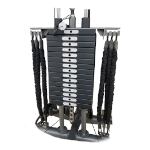
Advantages:
Smooth. Combining the resistances created by gravity (weight stack) and tension (bands or tubes) is seamless and results in the smoothest feel across all types of training. This includes high speed cardio, sports actions and even repeat ballistic movements as the momentum of the weight stack stops the resistant bands/tube’s bouncing issue and the resistant bands/tubes solve the weight stack’s momentum issue.
Ease of Use. Users can easily select a desired amount of constant resistance, just like on traditional selectorized weight stacks, then add any number of bands or tubes to get the desired amount and intensity of variable resistance.
Disadvantages:
Manual Changes. Unlike electronic systems, the user will have to make any desired changes between sets manually.
Wear on Resistance Bands/Tubes. Because of its smooth performance during high-speed actions a Hybrid Weight Stack invites people to train in more intense and exciting ways. But as with exclusive variable resistance systems, the constant stretching of the resistance bands/tubes will eventually result in them requiring replacement. Fortunately, they are simple to change, and the unit can still be used in the meantime with less bands/tubes installed.
